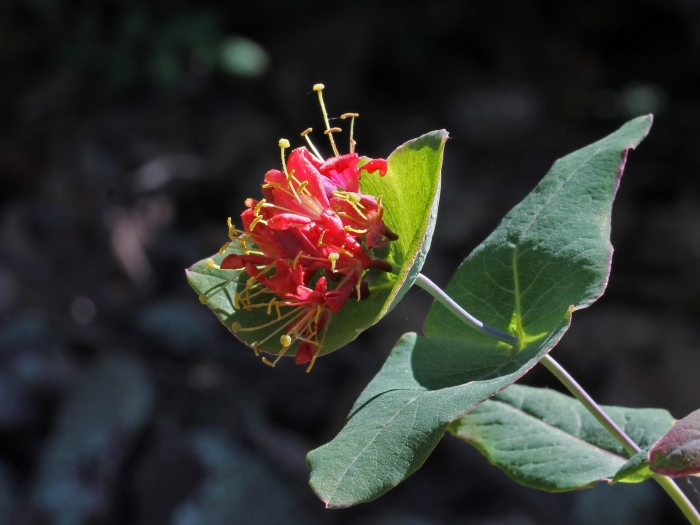Limber Honeysuckle
(Lonicera dioica)
Limber Honeysuckle (Lonicera dioica)
/
/

Rob Routledge, Sault College, Bugwood.org
CC BY 3.0












































Estimated Native Range
Summary
Limber Honeysuckle is valued for its wildlife benefits and its ability to adapt to a range of light conditions, making it suitable for use in woodland gardens, naturalized areas, or as a climbing vine on trellises and fences. It is relatively low-maintenance, tolerating both drought and partial shade, though it prefers well-drained soils. While not as aggressive as some other honeysuckles, it can spread in favorable conditions, so monitoring and management may be necessary to prevent unwanted spread.CC BY-SA 4.0
Plant Description
- Plant Type: Vine
- Height: 7-10 feet
- Width: 1-2 feet
- Growth Rate: Moderate
- Flower Color: Orange, Red, Yellow
- Flowering Season: Spring, Summer
- Leaf Retention: Deciduous
Growth Requirements
- Sun: Full Sun, Part Shade, Full Shade
- Water: Medium
- Drainage: Medium
Common Uses
Bee Garden, Bird Garden, Butterfly Garden, Deer Resistant, Hummingbird Garden, Low Maintenance, Showy Flowers
Natural Habitat
Open woodlands, forest edges, thickets, and prairies across Eastern and Central USA, and parts of Canada
Other Names
Common Names: Smooth Honeysuckle , Mountain Honeysuckle , Small Honeysuckle , Glaucous Honeysuckle , Blaugrüne Heckenkirsche , Vårkaprifol
Scientific Names: Lonicera dioica , Lonicera dioica var. glaucescens , Lonicera dioica f. dioica , Lonicera glaucescens , Lonicera parviflora , Lonicera dioica var. orientalis , Lonicera dioica subsp. glaucescens , Lonicera glauca , Lonicera macrophylla , Lonicera glaucescens var. dasygyna
GBIF Accepted Name: Lonicera dioica L.